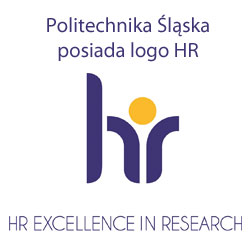Start - Research topics

Research topics
The research area includes conceptual analysis and experimental research, focused on obtaining new materials with desired properties, with particular focus on the perspective of their technological applications. The main goal of the development of advanced materials is to increase the comfort and quality of life of people, solve the biggest civilization problems related to the deficit of energy, water, food and climate change and limit the negative effects of technological development. The creation of advanced materials requires knowledge about the crystal and electronic structure and improving the ability to manipulate matter (also at the atomic scale). The efficiency and repeatability of research conducted in recent years have significantly increased, which is directly related to the progress in the field of scientific instruments and their software. The university has a group of modern and comprehensively equipped laboratories, dedicated both to the production and characterization of manufactured materials, as well as experienced staff.
For instance, the Laboratory of Electron Spectroscopies and Functional Materials ESpeFuM conducts research on materials and material structures for applications in electronics, photovoltaics and metrology, including interfaces and the surfaces of inorganic-organic hybrid structures. It offers measurements using spectroscopic methods: ultraviolet and X-ray photoelectron spectroscopies (UPS, XPS), Auger electron spectroscopy (AES) photoemission yield spectroscopy (PYS), thermo-programmed desorption (TDS), impedance spectroscopy (IS). Complementary measuring methods are scanning microscopies: scanning electron microscopy (SEM), atomic force microscopy (AFM), electric force microscopy (EFM), scanning thermal microscopy (SThM) and Kelvin probe microscopies (SKPM). Moreover, a wide range of optical and photoelectric methods are available (photoluminescence, photoconductivity, surface photovoltage, photo capacity) as well as thermal measurements including photothermal techniques and differential scanning calorimetry (DSC). The laboratory is also equipped with an ultra-high-vacuum technological setup for manufacturing of thin-film hybrid structures by physical vapour deposition (PVD) with the ability of in-situ transfer to ultra-high-vacuum research chambers.
The main directions of the conducted research include the preparation and application of materials with new, useful properties resulting from nanosize, the development of effective technologies for the production of metals and their alloys, modern composite materials with a light metal matrix, modern metallic glasses with the addition of rare earth elements, coatings (applied on construction materials and tools) and thin layers (for photovoltaics and optoelectronics), development of laser technology for surface modification of metal alloys and the preparation and use of new materials in biomedical and dental engineering.
The main directions of the conducted research include obtaining and application of:
- materials with new, useful properties resulting from nanosize (obtaining carbon nanotubes and graphene by CVD and polymer nanofibres by electrospinning, insertion of metal and oxides nanoparticles into polymer nanofibres, production of nanoparticles for catalytic applications, as drug carriers, materials with special physical properties and components of other nanocomposite materials),
- development of effective technologies for the production of metals and their alloys (multiphase steels, TRIP, TWIP and SBIP steels, dispersion strengthened, microstructure fragmentation as a result of intense plastic deformation, powder metallurgy, pressure infiltration) and advanced composite materials with a light metal matrix,
- modern metallic glasses based on light metals (Mg, Ca) and ferromagnetic (Fe, Co, Zr) with the addition of rare earth elements,
- coatings applied for construction of materials and tools (CVD, PVD, hybrid technologies) and thin films for photovoltaics and optoelectronics (nanostructured and transparent TCL conductive layers, used in electronic devices, as elements of displays and monitors and in photovoltaic cells), transparent conductive layers with carbon nanomaterials (nanotubes, graphene) and oxide ZnO layers doped with transition metals, also for photovoltaic applications,
- development of laser technology for surface modification of metal alloys and 3D printing,
- receiving and using new materials in biomedical and dental engineering,
- surface modification of titanium implants with the use of plasma electrolytic oxidation,
- corrosion investigations of advanced materials,
- development of effective manufacturing technologies and processing of alloys based on intermetallic phases from Ti-Al and Fe-Al systems, Cu-Ti-X alloys, aluminium alloys, titanium alloys and titanium alloys with improved properties caused by the presence of carbon,
- development of manufacturing technology of aluminium and magnesium composites as ex-situ type reinforced with particles (TiN TiC, HfC SiO2, Al2O3) and fibres (Ni, Cr), and in situ type containing intermetallic phases (aluminides of iron and Ti3Al aluminide),
- development of high-temperature hydrogen treatment technology in the field of titanium alloys and alloys based on intermetallic phases,
- application of steel and alloys, selection of technologies for obtaining resistant to degradation coatings in operating conditions and welding technology for the modern power industry for the purpose of installation elements with ultra-supercritical parameters,
- development of effective as-cast technologies of magnesium alloys (Mg-Al-Ca-Sr, magnesium alloys with rare earth elements, for example, AE44, WE43 and Mg-Li alloys), composites based on magnesium alloys and aluminium alloys matrix for automotive and aircraft,
- design and manufacture of new materials for high-temperature applications, including nickel and cobalt superalloys, as well as ceramic materials designed to obtain TBC thermal barrier coatings.
Here, at SUT, we tackle their key challenges to open the route towards their implementation in real life for the benefit of society. To reach this goal, we have developed a range of innovative methods of synthesis and assembly into macroscopic networks (fibres, coatings, etc.). Moreover, we have designed highly precise methods of control of their structure to tailor the properties of the obtained material for the selected applications. These novel materials are envisioned to play a key role in photonics, electronics and many other fields of exploitation. The Silesian University of Technology Researchers is experienced in the synthesis of advanced organic materials including conjugated polymers, physicochemical and electrochemical characteristics of polymers, oligomers, composites and small molecules. The scope of research and development is in the field of synthesis and characterization of new organic materials for optoelectronics, photovoltaics and electrochromic materials and the formation and analysis of organic electronic devices. SUT scientists have developed new exciplex emitters and thermally activated delayed fluorescence for use in OLED displays and lighting and together with the funding from the European Union and the Horizon 2020 program were able to cooperate with renowned research institutions and companies in this field. Organic Electronics is currently at the top of scientific interest and many companies are investing in the development in this area (Apple, LG, Samsung). In Poland, the Silesian University of Technology is the only institution operating on wider aspects of organic electronics and cooperating with many international companies like AIXTRON S.E., KGgA Merck, Novaled (Samsung), Cynora, Pratt and Whitney Canada.













